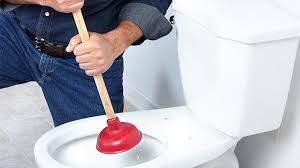A toilet that won’t flush is a common household problem that can be both frustrating and unsanitary. Whether you’re dealing with a weak flush, a clog, or a complete lack of flushing action, understanding the root cause is the first step to fixing the issue. In this guide, we’ll walk you through the most common reasons why your toilet isn’t flushing and provide step-by-step solutions to get it working again.Before diving into repairs, it’s important to identify the symptoms. Is the water level in the bowl too low or too high? Does the handle feel loose or stuck? Answering these questions will help you pinpoint the problem. Below, we’ve outlined the most likely causes and how to address them.
- Clogged Toilet: A clog is the most common reason for a toilet not flushing. If water rises in the bowl or drains very slowly, you likely have a blockage. Use a plunger to dislodge the clog. For stubborn clogs, a toilet auger may be necessary.
- Low Water Level in the Tank: If there isn’t enough water in the tank, the toilet won’t flush properly. Check the water supply valve to ensure it’s fully open. Adjust the float valve to increase the water level if needed.
- Faulty Flapper: The flapper is a rubber seal that releases water from the tank into the bowl. If it’s worn out or damaged, it won’t create a proper seal. Replace the flapper if you notice leaks or inconsistent flushing.
- Broken Lift Chain: The lift chain connects the flush handle to the flapper. If it’s too loose or broken, the flapper won’t open fully. Adjust or replace the chain to restore proper flushing.
- Mineral Buildup: Hard water can cause mineral deposits to accumulate in the toilet’s jets, reducing flushing power. Clean the jets with a vinegar solution or a specialized cleaner to restore water flow.
If you’ve tried these solutions and your toilet still isn’t flushing, the issue may be more serious. A damaged flush valve or a problem with the sewer line could require professional assistance. However, in most cases, the steps above will resolve the problem.To prevent future issues, consider these maintenance tips:
- Avoid flushing non-flushable items like wipes, paper towels, or feminine hygiene products.
- Regularly clean the toilet bowl and tank to prevent mineral buildup.
- Inspect the flapper and other components annually for wear and tear.
By following this guide, you can save time and money by fixing a toilet that won’t flush on your own. Remember, if the problem persists or you’re unsure about any step, don’t hesitate to call a plumber for help.

